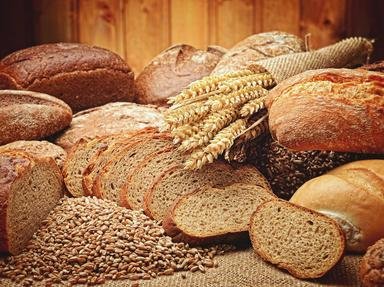Quiz Answer Key and Fun Facts
1. Kabuli Palaw is considered, by people who live there, to be the national dish of which country?
2. The East Indian equivalent of pilaf is biryani. It started in India but spread to Persia via the trade routes and is now popular in numerous forms throughout South Asia. What makes biryani different from most other forms of pullao (pilaf)?
3. The Spanish equivalent to pilaf is a dish called paella. It is made with short-grain rice to which rabbit, chicken and duck are added, or to which shrimp, mussels, lobster and squid are added, or mixed style wherein both are added. What is the one expensive seasoning (herb or spice) that is necessary to authentic Spanish paella?
4. In North America, pilafs are made elegant by the addition of wild rice to the white rice used. Is it true or false that wild rice is a different species within the same genus as Asian (white) rice?
5. In Moroccan cuisine, couscous prepared in the traditional way is the most common starchy side dish. Pilaf is, however, also served as a side dish to stand up to the strong seasonings of meat cooked in a tagine. As an alternative to rice, Moroccan pilaf might be made with which of the following main ingredients?
6. Another dish that derives from the same sources as pilaf is jambalaya. Jambalaya is made with long-grain white rice, tomatoes, garlic and hot spices, to which seafood, shellfish, chicken and sausage are added variously. Where did jambalaya originate?
7. The Greek word for pilaf is "pilafi." Greek pilafi is typically made with lamb, beef or chicken stock. For special occasions, Gamopílafo ("wedding pilaf"), a Cretan dish, is prepared by adding what to the dish?
8. Although plov or palov is an essentially Uzbekistani dish, it spread throughout the former Soviet Union and is now firmly a part of Russian cuisine. It normally contains rice, meat, onions and carrots. Which of the following is untrue?
9. The Mexican equivalent of pilaf is sopa seca de arroz. This dish is made with long-grain white rice, gets its colour from tomatoes and its flavour from onion, garlic and chile peppers. What is the literal meaning of "sopa seca de arroz"?
10. A classic French technique for the preparation of pilaf is to sweat the aromatics (onions or shallots) in butter (or other fat) and then add the raw rice to the pan. The rice is cooked in the fat until the grains become translucent. What is the purpose of this technique?
Source: Author
FatherSteve
This quiz was reviewed by FunTrivia editor
WesleyCrusher before going online.
Any errors found in FunTrivia content are routinely corrected through our feedback system.

